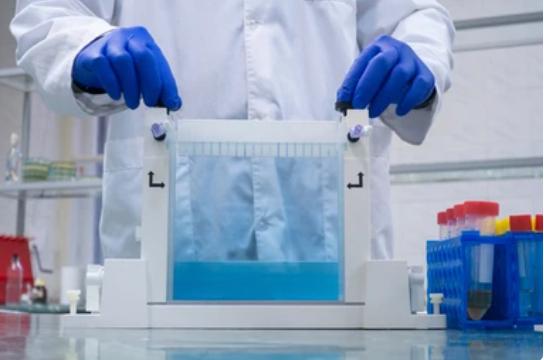- Home
- About Us
- Products
- Services
- Recommendation
- Industries
- Resource
- Order Center
- Contact Us
Polyacrylamide (PAM) is a synthetic polymer compound that is commonly used in various industries and applications. It is a white, solid powder that is soluble in water. PAM is made up of repeating units of acrylamide, a monomer that undergoes polymerization to form the large polymer chains of polyacrylamide. Polyacrylamide has a wide range of properties and can exhibit different characteristics depending on its molecular weight and degree of polymerization.
The action mechanism of polyacrylamide involves its ability to form a network or bridge between particles or molecules in a solution. When added to a liquid, PAM molecules adsorb onto the surface of particles or ions, creating a polymer matrix that can entrap and aggregate them.
PAM is commonly used as a matrix material in gel electrophoresis. It helps to separate DNA, RNA, proteins, and other biomolecules based on their size and charge.

In water treatment applications, polyacrylamide is used to facilitate the settling or dewatering of suspended solids. The polymer molecules bind to the particles, forming larger and denser flocs that can settle more rapidly. This process is known as flocculation.
In agriculture, polyacrylamide can be used to improve soil structure and reduce erosion. When applied to soil, it can bind soil particles together, forming aggregates that enhance the soil's water-holding capacity and stability. This can help prevent soil erosion and improve crop yield.
Polyacrylamide can also be used as a drilling fluid additive in oil and gas exploration. It helps to reduce friction and enhance fluid viscosity, improving the efficiency of drilling operations.
Additionally, PAM can aid in the reduction of water loss during irrigation by increasing the infiltration rate of water into the soil, minimizing runoff and improving water use efficiency.
Overall, the action mechanism of polyacrylamide involves its ability to bind particles or molecules together, promoting flocculation, filtration, and stabilization in various applications. Its versatility and effectiveness make it a valuable tool in fields that require the management of solids, water clarification, and soil stabilization.
The different types of polyacrylamide PAM can be classified based on their molecular weight and charge characteristics. Here are some common types:
This type of PAM does not carry any charge and is typically used as a flocculant or thickening agent in various industries such as wastewater treatment and mining. It helps in the formation of flocs to facilitate the removal of suspended particles from water or other liquid solutions.
Anionic PAM contains negatively charged groups along the polymer chain. It is commonly used in applications such as soil stabilization, erosion control, and oil recovery. Anionic PAM helps in reducing soil erosion by improving the stability of soil aggregates and enhancing water infiltration.
Cationic PAM carries positive charges along the polymer chain. It is primarily used in wastewater treatment processes to destabilize and flocculate negatively charged particles. Cationic PAM is effective in removing suspended solids, organic matter, and pathogens from wastewater, making it easier to separate and purify.
This type of PAM contains both positively and negatively charged groups along the polymer chain. It can be used in a wide range of applications, including water treatment, papermaking, and personal care products. Amphoteric PAM provides versatility in addressing different types of contaminants and adjusting to varying water conditions.
Product List
Click the product name to view product details.
| CAS NO. | Product Name | Inquiry |
|---|---|---|
| 9003-05-8 | Polyacrylamide | Inquiry |
| 9003-05-8 | Anionic Polyacrylamide | Inquiry |
The selection of the appropriate type of polyacrylamide PAM depends on the specific requirements of the application and the characteristics of the water or wastewater being treated. It is essential to consider factors such as pH, temperature, concentration, and composition of the target solution to achieve optimal performance.
Privacy Policy | Cookie Policy | Copyright © 2025 Alfa Chemistry. All rights reserved.
Back to top